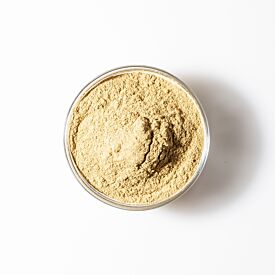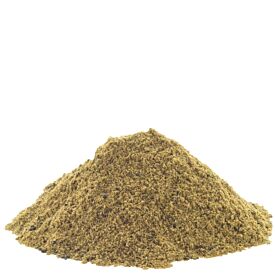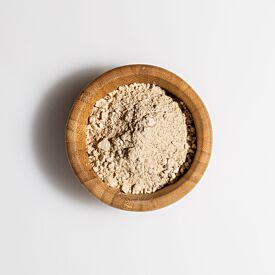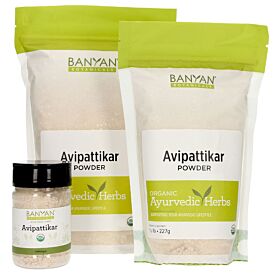The Four Varieties of Agni

According to Ayurveda, good health, longevity, and balanced agni all go hand in hand. Conversely, most imbalances and diseases can ultimately be traced back to impaired agni. It’s that simple. Balanced agni is the key to living a long, healthy, and fulfilling life whereas impaired agni is a surefire way to court imbalance, disease, and discontent. But how do we know if our agni is balanced? What are the signs and symptoms of discord in the central digestive fire? And how can we support a return to balance when things go awry? To help us get our bearings, Ayurveda identifies four basic varieties of agni. In the paragraphs that follow, you will find a detailed exploration of each of them, and, where appropriate, links with suggestions on how best to support a return to balance. It is our hope, that in understanding the different faces of both healthy and impaired agni, you will be better able to care for your own.
Sama Agni: Balanced Agni
Those few among us who are blessed with balanced agni enjoy a wide range of benefits as a result. Balanced agni results in happiness, perfect health, and a calm, clear, and loving state of mind.1 Individuals with sama agni can generally digest a reasonable quantity of any food in any season without issue, and they tolerate changes in the weather and the seasons quite gracefully.1 These individuals enjoy balanced digestion, absorption, and elimination, a surplus of ojas, tejas, and prana, strong immunity, and an abiding sense of contentment and satisfaction, even bliss, in their lives.1
Unfortunately, in the modern era, with our highly processed food supply, and our fast-paced, high-stress culture, sama agni is rare. The vast majority of us will identify with one or more of the other three varieties of agni: those that are impaired in some way. But, do not perceive this as a life-long sentence to suffering. Rather, it is an invitation to heal. Once we know what forces have disturbed agni, we can much more effectively support its recovery. Even a rather recent or seemingly short-lived imbalance in agni should be tended to. In fact, the earlier an imbalance is detected and addressed, the easier it will be to correct.
Agni and the Three Doshas
In the beginning, disturbed agni is usually a result of an accumulation of vata, pitta, or kapha in the digestive tract. This excess takes a toll on agni and hinders its proper functioning. Over time, impaired agni can exacerbate doshic imbalances and can also lead to the accumulation of ama. These developments further compromise agni, and the cycle tends to perpetuate itself. So helping agni to return to balance has both an immediate and a long-term impact on our health. It improves how we feel now, and it helps to prevent the accumulation of vata, pitta, kapha, and ama in the future.
Still, how to go about restoring the strength of agni depends on what’s affecting it in the first place. Different types of imbalances affect agni differently, and require different treatments. That’s where the three varieties of impaired agni come in handy. The following will give you a foundational understanding of how each dosha and its qualities affect the hot, sharp, dry, light, and subtle nature of fire. But keep in mind that it is entirely possible to have a combination of them affecting agni such that an imbalance might involve two, or even all three of the doshas. If you find that you have strong indicators of two or more types of agni affecting your system, we would highly recommend that you see an Ayurvedic practitioner in order to receive more personalized recommendations, as correcting more than one type of imbalance in agni can be a bit tricky. Until then, you can follow the general recommendations in our resource on The Importance of Healthy Digestion.
Vishama Agni: Irregular Metabolism (too erratic)
Vishama agni is associated with excess vata. Vata’s light, dry, subtle and clear qualities are actually quite supportive of agni, whereas its cold and mobile qualities often interfere with agni. The cold quality dampens agni’s heat while the mobile, airy quality acts much like a gusty wind—either intensifying the fire, slowing it briefly, or, if the fire is too weak to begin with, blowing it out completely. Vishama agni is therefore irregular and erratic in nature, and it can change on a dime.
Signs & Symptoms
Vishama agni causes an irregular appetite, variable digestion, indigestion, abdominal distension, gas, gurgling intestines, constipation (or alternating constipation and diarrhea), and colicky pain.1, 2 Other symptoms of vishama agni include dry mouth, receding gums, dry skin, cracking joints, sciatica, low back ache, hemorrhoids, muscle spasms, and insomnia.1 The tongue can develop indentations along the margins, and can be especially dry, or even hairy.2 Vishama agni can also cause a feeling of heaviness after eating, and cravings for hot, spicy, or fried foods.1 Emotionally, it tends to cause anxiety, fear, and insecurity.1 When ama forms as a result of vishama agni, there is often a brownish-black coating on the back (posterior) portion tongue.2 If a number of these symptoms sound familiar, you’ll want to review our resource on balancing vishama agni. If your symptoms seem largely unrepresented here, or if only some of your symptoms are described here, continue reading.
Tikshna Agni: Hypermetabolism (too hot and too sharp)
Tikshna agni is associated with excess pitta. Pitta’s light, hot, sharp, spreading, and subtle qualities normally support agni but in excess, they can inflame it—triggering the overactive, hypermetabolism that characterizes tikshna agni.1 When this is the case, nutrition is often incinerated and passed through the digestive tract very quickly, leaving the tissues undernourished. (Note: you may have noticed that pitta’s liquid and oily qualities are not mentioned here. An excess in these qualities tend to dampen agni—much like pouring hot water on a fire—and can cause manda agni, instead.1 In this case, refer to the manda agni section below).
Signs & Symptoms
Tikshna agni causes excess intensity in the digestive fire. Individuals with tikshna agni often have a somewhat insatiable appetite, tend to desire large quantities of food on a frequent basis, and have great difficulty skipping meals.1 They can also experience fiery symptoms like hyperacidity, acid indigestion, gastritis, heartburn, hot flashes, acidic saliva, and fever.1, 2 The lips, throat, and palate may feel excessively dry after eating and the tongue can develop red margins and tenderness.1, 2 Other symptoms of tikshna agni include hypoglycemia, nausea, vomiting, diarrhea, dysentery, loose stools, pain in the liver, ulcerative colitis, and other inflammatory conditions.1, 2 Tikshna agni can also cause hives, rash, acne, and many other skin conditions (consider reading our Soothing Skin Guide).2 Emotionally, tikshna agni tends to trigger anger, hate, envy, irritability, aggressiveness, a strong desire to be in control, and harsh judgment of everyone and everything.1, 2 Tikshna agni is often accompanied by an intense craving for sweets.1 When ama forms as a result of tikshna agni, it tends to cause a yellow or greenish coating on the central part of the tongue.2 If a number of these symptoms sound familiar, you’ll want to review our resource on balancing tikshna agni. If your symptoms are either unrepresented, or only partially represented here, please continue reading.
Manda Agni: Hypometabolism (too slow and too dull)
Manda agni is associated with excess kapha. Kapha dosha is predominated by the earth and water elements and is heavy, slow, cool, oily, smooth, dense, soft, stable, gross, and cloudy. As such, kapha serves as an important buffer against the heat and intensity of agni in the body. However, in excess, kapha can’t help but suppress the digestive fire, leaving it underactive, dull, and sluggish. And, as we saw earlier, manda agni can also be the result of pitta’s oily and liquid qualities accumulating. Because of the gross, physical nature of these influences, manda agni usually takes longer to develop and can require more time to correct as well.1
Signs & Symptoms
Manda agni dulls the appetite, slows the metabolism and causes the experience of heaviness in the stomach, the body, and the mind—especially after eating, but sometimes even without food.1 Manda agni often leads to frequent colds, congestion, coughs, as well as allergies, edema, and lymph congestion.1 It can also cause over salivation, nausea, mucoid vomiting, hypertension, hyperglycemia, diabetes, hypothyroid, excess weight, and obesity.1 Cold, clammy skin, and generalized weakness are also signs of manda agni.1 Mentally and emotionally, it can cause lethargy, boredom, attachment, greed, and possessiveness, along with a desire for excess sleep.1, 2 Manda agni can elicit a strong craving for sharp, dry, and very hot, spicy foods.1 When ama forms as a result of manda agni, it tends to cause a white coating on the entire tongue.2 If several of these symptoms sound familiar, you’ll want to review our resource on balancing manda agni.
More Complex Imbalances
Remember, it is entirely possible to have more than one type of impaired agni acting on the system at once. There might be tikshna-vishama agni where the appetite is strong but the digestion is irregular, such that when one eats a large meal, they get gas, bloating, and discomfort.2 Another example would be vishama-manda agni where the appetite is irregular and digestion is sluggish, causing fairly persistent lethargy, bloating, and sleepiness.2 Of course, any combination of the three varieties of agni is possible. It is even possible to have vishama-tikshna-manda agni, although this is a rather serious imbalance. At this stage, the most important thing is to identify the major players in your situation and to begin to offer whatever small steps you can to support your agni in returning to balance.
The Big Picture
As we know, healthy agni is the key to optimal health. It digests our food, processes our emotions, oversees intelligence throughout the body, and lends life its particular flavor. Ultimately, there is only one agni, and it exists everywhere in the body. The four varieties of agni are simply a tool for distinguishing healthy agni from impaired agni, and—if it is somehow compromised—for identifying the influences that have disturbed it. Ayurveda is not a one-size-fits-all system of healing. The individual circumstances and the context within which those circumstances arose are every bit as important as the particular collection of symptoms. The point of these types of tools is to increase self-awareness so that we can apply the wisdom of Ayurveda and begin to heal. If the entire process feels daunting or overwhelming, an Ayurvedic practitioner can help you to sort out the particulars of your case and offer personalized support wherever you need it. If you are eager to expand your understanding of agni and related topics, you may find these additional resources helpful:
-
The Importance of Healthy Digestion
As an introduction to the critically important Ayurvedic concept of agni, this resource explores agni’s role in maintaining health and vitality throughout the body, and offers practical tools for kindling the sacred fire within. -
Ama: The Antithesis of Agni
This piece introduces the toxic, undigested material called ama, whose qualities directly oppose those of agni. Ama in the body can either be the cause or the result of impaired agni—and in either case, threatens our health. -
Ayurvedic Guide to Healthy Elimination
This resource provides a comprehensive look at healthy elimination through the lens of Ayurveda; it highlights the importance of healthy bowel habits and stools, offers some general tips for supporting proper elimination, and links to more specific articles on vata type elimination, pitta type elimination, and kapha type elimination. -
The Importance of Agni
This article explores the specific functions of agni, as well as the signs and symptoms of healthy and impaired agni.












